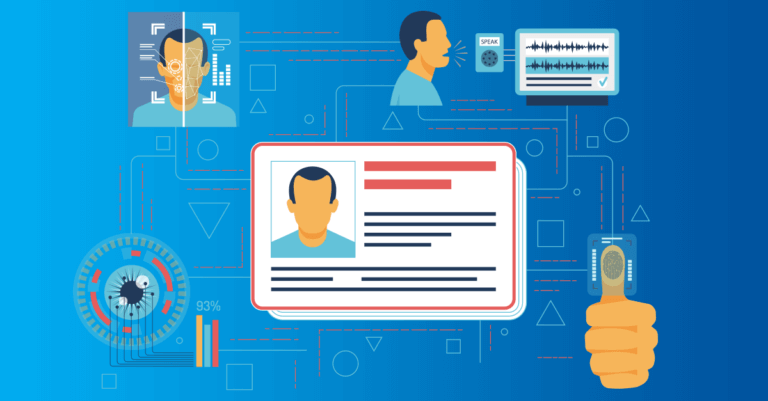Digital threats are constantly changing, and so are the ways to protect apps from them. It’s tough to stay updated, but not doing so can lead to big problems like data leaks or malware. Luckily, TECHVIFY has gathered a list of Web Application Security risks for you. Based on The OWASP (Open Worldwide Application Security Project) Top 10, TECHVIFY will give you the latest details on these risks.
I. Web Application Security: Overview
1. What is web application security?
Web application security (Web AppSec) is the practice that ensures websites function reliably, even when faced with potential threats. Like all software, web applications have imperfections, and some of these can be security vulnerabilities, posing web application security risks to entities. Web AppSec aims to counteract these flaws. This is achieved by adopting secure coding practices and incorporating security protocols throughout the software development life cycle (SDLC), ensuring both design and implementation issues are rectified.
2. Types of web application security
Web application security refers to protecting these applications from threats and vulnerabilities. To give you a clearer picture, we’ve categorized these security measures into distinct types:
| Categories | Types |
| User Identity and Access Control |
Authentication: Confirming a user’s identity. Authorization: Defining what a user can and cannot do. Session Management: Safeguarding user sessions from potential threats. Rate Limiting and Throttling: Limiting the number of requests a user can make. Access Control Safeguards: Preventing unauthorized access. |
| Input and Content Security |
Input Validation: Checking user inputs for malicious data. XSS Prevention: Protecting against harmful scripts. CSRF Protection: Validating the authenticity of requests. SQL Injection Prevention: Guarding against malicious database queries. Secure File Uploads: Ensuring only safe files are uploaded. Content Security: Preventing unauthorized content changes. Error Management: Not revealing too much in error messages. |
| Data Protection and Encryption |
Data Encryption: Scrambling data to make it unreadable without a key. Encryption Controls: Safeguarding data at all times. Secure APIs: Protecting the interfaces through which apps communicate. |
| Infrastructure and Network Security |
Security Headers: Adding extra layers of security in data requests and transfers. Firewalls and IDS: Filtering and monitoring data traffic. DDoS Mitigation: Preventing traffic overload attacks. CDN: Speeding up content delivery and adding an extra layer of protection. |
| Monitoring, Testing, and Maintenance |
Security Testing and Scanning: Periodic checks for vulnerabilities. Security Patch Management: Keeping the application updated. Logging Controls: Keeping records of application activities. Incident Response Plan: A plan for when things go wrong. |
| Development and Training |
Application Security Testing Controls: Checking for vulnerabilities during development. Security Training and Awareness: Keeping the team updated about the latest threats and best practices. |
Learn More On:
3. The Importance of Security in Web Applications
Why web application security is important is evident for any online business. Web application security is essential for three primary reasons:
- Safeguards sensitive information.
- Emphasizes that security is more than just testing.
- Upholds a company’s image and minimizes potential losses.
A cyber breach can have consequences that extend beyond monetary losses. While many web applications face vulnerabilities, specific sectors, like blockchain and cryptocurrencies, are more susceptible to cyber threats. Ensuring the security of web applications is vital for any online business’s success. Data drives the digital economy, and the potential for both innovation and threats related to it is vast.
Given the global nature of the Internet, web applications can be targeted from various locations and by attackers of different skill levels. Web application security primarily protects websites, online tools, and APIs.
II. Top 10 web application security risks 2025
1. Injection
This wide-ranging attack category, injection, happens when trusted code or malware is introduced to let attackers modify essential commands. Such attacks exploit coding flaws, allowing unauthorized users to provide input.
2. Cryptographic Issues
This term denotes any data leak or breach resulting from encryption problems or its absence.
The importance of data encryption in cybersecurity is evident, yet not all entities ensure their data is adequately encrypted.
Web Application Security specialists emphasize that it’s simpler to safeguard sensitive data if it’s not stored at all. While encryption is vital, it’s equally essential for applications to have multiple security layers, ensuring protection even if encryption measures fail.
3. Insecure Design Explained
The main idea behind this category is to highlight that many security challenges emerge early in the development process, emphasizing the need to address them during the initial stages.
Web Application Security specialists suggest adopting a security-centric approach, which includes thorough threat modeling, adherence to secure design principles, and use of reference architectures.
4. Inadequate access control
Even the best security plans can fall short if they aren’t correctly applied. It’s not uncommon to see robust security measures in place that don’t live up to their intended effectiveness.
The main issue? Inadequate access control, where unauthorized individuals can access systems and user accounts that should be off-limits. This unintended access puts confidential data in jeopardy. Many applications with this problem don’t genuinely adhere to the rule of least privilege. This rule emphasizes that users should only have the exact permissions they need for their tasks.
Data from OWASP shows that many applications experience inadequate access control issues, making it clear that this challenge is prevalent.
5. Security misconfiguration issues
Neglecting security protocols can expose even the most solid websites to risks. Default settings often lack the rigor needed in today’s threat-laden digital landscape. Missteps can occur anywhere, from application servers to network services, often due to extra features or outdated software.
Such oversights can invite threats like cross-site scripting or command injection. Tools like web application firewalls (WAFs) can falter if misconfigured. Vigilance is, therefore, paramount.
6. Outdated and vulnerable components
As software complexity grows, so does the risk of outdated and vulnerable components. This concern has recently risen on the Web Application Security list. Many websites continue using features with known vulnerabilities, creating openings for cyberattacks.
The best defense is staying informed. Before using third-party components, assess them thoroughly and monitor for vulnerabilities continuously. More straightforward applications with fewer components are less likely to be vulnerable. Regular updates and effective patch management are crucial. There should be clear guidelines for identifying and addressing potential security gaps.
7. Issues with identification and authentication
Identification and authentication issues often stem from inadequate password security or application session management. Some apps allow default or weak passwords, making them vulnerable to brute-force attacks, credential stuffing, and session takeovers. Regular scans can highlight these vulnerabilities. Beyond strong passwords, incorporating multi-factor authentication and CAPTCHA enhances protection against cyber threats.
8. Issues with software and data integrity
Software and data integrity are at risk when code and infrastructure aren’t secure, leading to vulnerabilities across software frameworks and user devices. OWASP’s 2021 report emphasizes the dangers of relying on unverified plugins, libraries, or CDNs. Attackers can also exploit auto-updates without integrity checks to distribute malicious content. A critical defense is using digital signatures, ensuring data validation directly from the software source.
9. Security logging and monitoring
This category underscores the general absence of login activity tracking rather than pinpointing a specific flaw.
Recording login attempts is vital for detecting potential threats, as many failed logins can signal unauthorized access attempts. It’s essential to securely back up these logs and store them in different places to avoid accidental loss due to natural events or equipment malfunctions. Real-time monitoring further enhances security by ensuring timely analysis of these logs.
This category shares similarities with the previously mentioned cryptographic failures. Malicious actors might easily access and alter log records without proper encryption for stored data and in transit.
10. Server-side request forgeries (SSRF)
SSRF occurs when web application vulnerabilities allow attackers to manipulate resources using standard server functionalities. While SSRF shares similarities with cross-site scripting (XSS) and cross-site request forgery (CSRF), it targets the server instead of the client.
The crux of these attacks often revolves around improperly managed URLs. Attackers might provide malicious URLs or alter existing ones, enabling them to access sensitive information like server configurations. Although the primary concern is data exposure, SSRF can also enhance Cross-Site Port Attacks (XSPA).
III. How does TECHVIFY assist in enhancing the security of web applications?
Web applications remain a prime target for malicious attackers online as they search for weak spots within these apps. While developers employ various security measures and tools to protect their applications, these often need to catch up.
Many applications continue to have vulnerabilities, primarily because developers might not be up-to-date with the newest security threats and solutions. Addressing vulnerabilities is a crucial step toward enhancing web application security.
This is where TECHVIFY steps in; we offer an impeccable solution. Our team collaborates closely with you, crafting a tailored test plan and strategy that aligns perfectly with specific web application requirements. With our advanced automation services, not only do we execute tests efficiently, but we also provide insightful reports on software behavior and performance.
Conclusion
As we’ve explored, even the most robust applications can have vulnerabilities, and attackers always look for these weak spots. Addressing Web Application Security vulnerabilities is crucial. While developers play a pivotal role, having a dedicated team like TECHVIFY can make all the difference. With our expertise, tailored strategies, and advanced testing methods, we aim to fortify your web applications against potential threats. If you’re serious about enhancing your web application’s security, don’t leave it to chance. Contact TECHVIFY today and let us help you safeguard your digital assets.
TECHVIFY – Global AI & Software Solution Company
From Startups to Industry Leaders: TECHVIFY prioritizes results, not just deliverables. Accelerate your time to market and see ROI early with high-performing teams, AI (including GenAI) Software Solutions, and ODC (Offshore Development Center) services.
- Email: [email protected]
- Phone: (+84)24.77762.666









